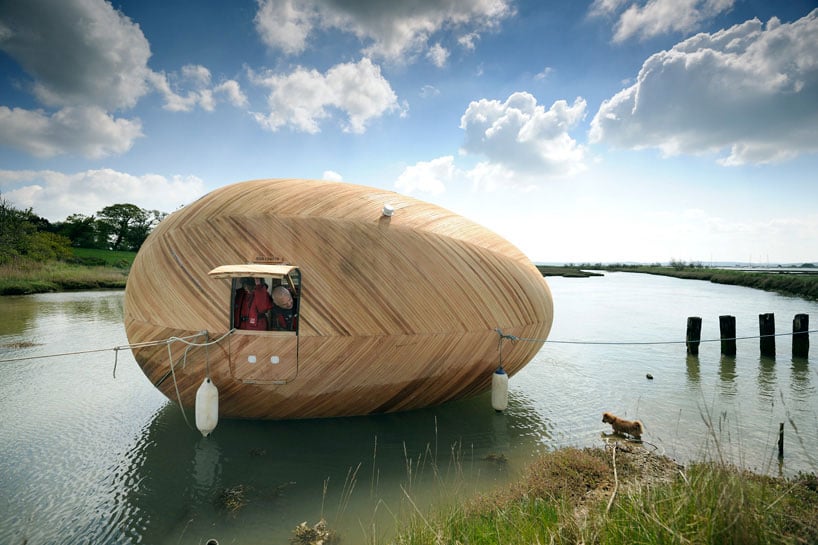You’ve been in the industry for a few years now, gone “around the block”, and carved out a niche for yourself as a quality architect. You may even have a few awards on the mantlepiece. Things are ticking along just fine.
When you think back on where you came from and all those years of hard work learning the skills you needed and building the business, you feel pretty damn pleased with the results. Thankfully, you preserved through all the obstacles, and now things are pretty good.
If you could go back and tell yourself as a young architect anything, what would it be? Unfortunately, the time-space continuum does not allow you to do this, but what you can do is make life a little easier to the next generation of young, up-and-coming designers. Remember how you felt buried in assignments or working on that first every commission? Look at how far you’ve come since then - maybe it’s time you gave a little of that wisdom to the next generation.
Here are a few ways you can give back to the next generation of architects:
Talk at University

For an aspiring architect, the first five+ years of his/her career are spent slumped over a desk in a lecture hall, the only contact with architects is with fellow students and with lecturers, who are usually academics, not practicing architects.
One of the most valuable things a student will do in university is start to get a grasp of what life is like AFTER university. Most universities run optional lectures and workshops on developing professional skills, where they bring in real-world architects to talk to students about what they can expect.
Giving a talk at university might be as simple as getting a few students together informally to look over their work and recommend next steps, or it could be addressing a packed lecture theatre. Mostly, it will be about answering students questions about the day-to-day life of an architect and assuring them they’ve picked an amazing career.
Become a Mentor

- Exbury Egg House.
As a young architect just starting out, did you have a seasoned pro take you under his wing and teach you everything he knew? Do you remember how important that assistance was to your in the beginning, when everything was new and scary and you didn’t know how you’d survive?
Well, now that you’re out the other side and things are going well at your practice, perhaps it’s time you became a mentor to that next young architect. You could do this through an official capacity, such as through a mentoring association or architects society, or you could simply offer to help a young architect in your network.
Mentoring situations should be regular, semi-formal chats. Get your mentee to bring along questions each week for you to answer. When I used to mentor I would often set tasks for the following week.
Remember, mentoring doesn’t only benefit the mentee - you can learn a lot being a mentor, such as how to explain concepts and teach others, and how to apply what you’ve learned across different situations.
Write Down Your Experience

If you don’t have the time to go talk at a university or mentor a young architect, perhaps you can reach an even wider audience with a simple article? Architecture magazines and blogs are always looking for new content, and part of that content is stories from successful architects. You could write about 5 lessons you learned in the first 5 years of practice, and create an article that can be posted in front of an audience of thousands. Not only are you helping aspiring architects, but your company is getting free exposure and website links.
Become an Investor

- Lotus Temple.
This isn’t for the faint-hearted. But it’s not uncommon for the next generation of entrepreneurs to be funded by the generation that has gone before them. young architects are filled with bold new ideas, such as creating small, pod-shaped treehouses or starting an eco-conscious design firm. And, if the idea is a success, you could be sitting on a tidy little nest egg, which is never a bad thing.
Or, you can help with funding in a smaller, more grassroots way. A group of Chicago IT companies pool resources to offer “geek grants” to schools and universities, startups and bright ideas in their local community. Perhaps you could create a grant or scholarship through your company that will grant young architects the opportunity to pursue their dreams.
Create an Internship

Internship programs are a great way for students to learn about the real, on-the-job experience of being an architect. If you create an internship programme at your practice, it can be a great way to get some cheap (or free) labour to cover busy periods, while giving you a great way to trial young up-and-comers for recruitment.
Giving back to the next generation a purely selfless act - it benefits you too. You get the kudos of helping someone get their start, some free or cheap labour, as well as learning from those you’re assisting, and potentially a high return on investment if things go well :) Plus, it’s awesome being able to pay it forward and give the next generation of architects a leg up in the world.
How do you pay it forward as an architect?






